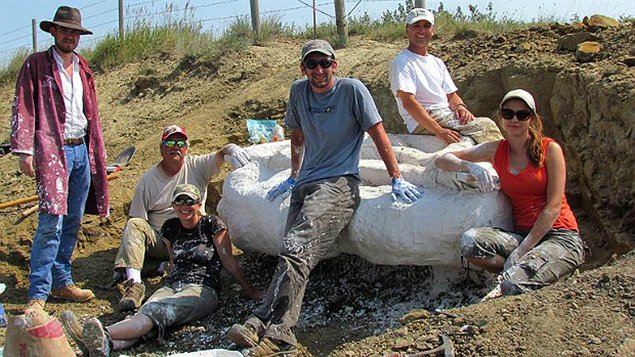
Last month’s floods in Alberta caused a lot of damage. But if there a silver lining to the tragedy, it’s that the recently exposed rocks on riverbanks could increase the chances of finding dinosaur fossils.
“Southern Alberta is definitely one of the richest places in the world when it comes to dinosaur fossils. With the recent floods … that potential is renewed”, says François Therrien, curator of palaeoecology at the Royal Tyrrell Museum, in Drumheller, east of Calgary.

The probability of new findings is so great, that paleontologists are asking the public for help in looking for and reporting their discoveries to the Tyrrell Museum.
“[People] are our eyes on the field. We can’t go everywhere,” the researcher says.
Therrien explains that the flooding caused exposure of rock in new areas, such as in the foothills west of Calgary or further east. Also, because of the variety of rock formations in the province, fossils of many different animals could be found, from new species or specimens of dinosaurs to marine reptiles.
And that is not all.
“There’s potential to find new petrified trees, leaf impressions … and archeological sites”, Therrien adds.
Do not collect the bones
Amateur archeologists should be careful, though, when approaching riverbanks.
“The riverbanks could have been destabilized by erosion. In some places, the ground may still be saturated”, Therrien warns.
Explorers should not collect their findings, though, as fossils are protected by law. They could record the position of the bones, if they have a GPS, or take photos and send them to the museum, the researcher explains.
Therrien and his colleagues don’t expect to uncover every dinosaur bone in one summer.
“The consequences of this flood are going to be felt for years to come. New exposures are not just going to disappear overnight”, he says.
François Therrien, curator of Dinosaur Palaeoecology at the Royal Tyrrell Museum, talks to Gilda Salomone about southern Alberta’s fossil rich soil.
ListenExternal links: